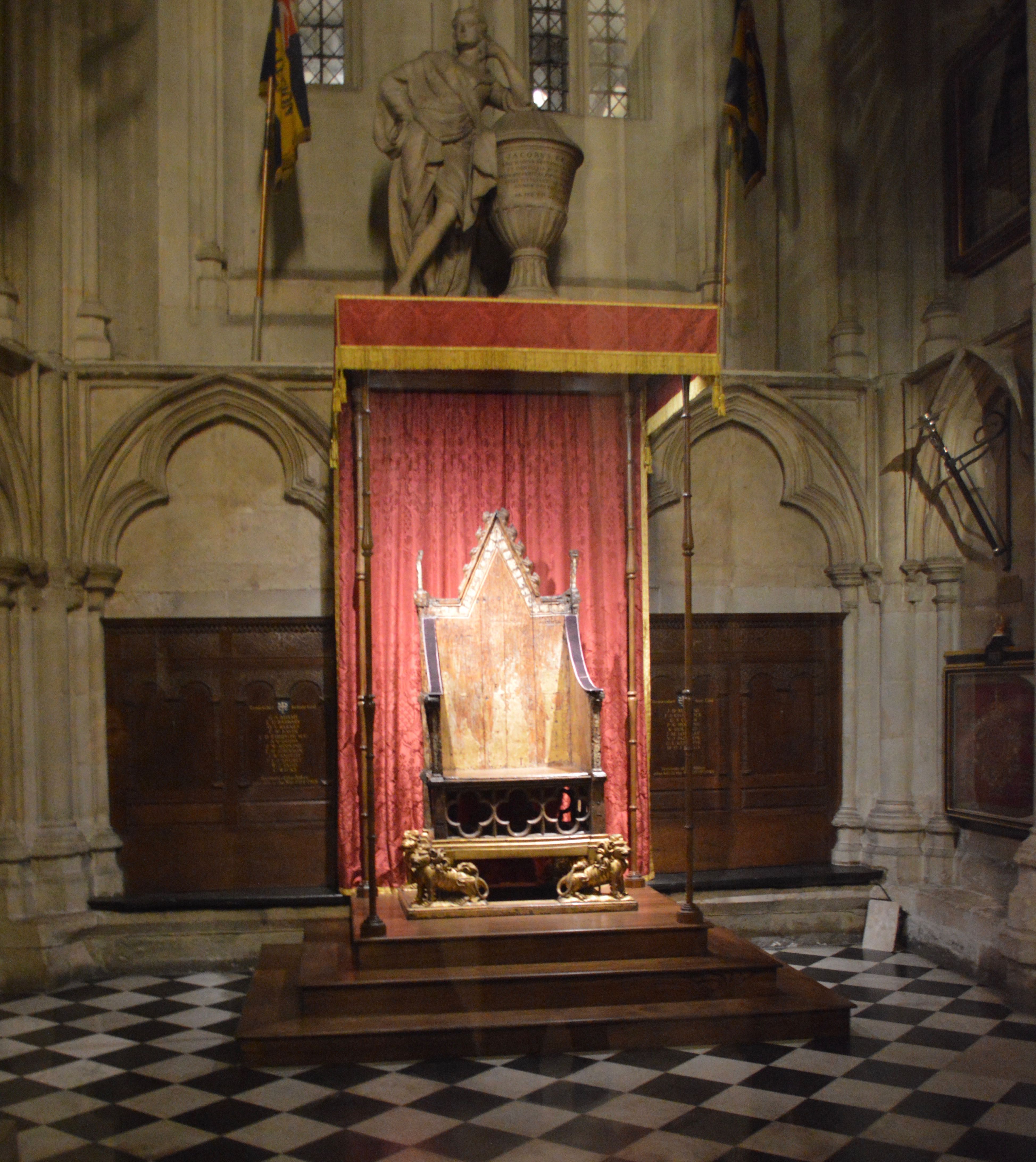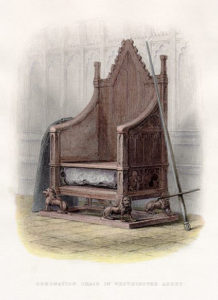
Whenever I’m taking Americans around Westminster Abbey, I like to mention that when Columbus stumbled across the Americas, King Edward’s Chair (commonly known as the Coronation Chair) was already nearly 200 years old; when the rebellious colonists laid out their Declaration of Independence, some two dozen monarchs had already sat here to be crowned.
It really is that old – created in 1300/01, used in its first coronation (of Edward II) in 1307. It predates all but one of the objects in the Crown Jewels (the Coronation Spoon), and comes from a time before the concept of ‘Britain’ or a’United Kingdom’ exercised any minds. Elizabeth II sat in it in June 1953, as did Elizabeth I in January 1559. Charles III will be crowned in it, as were Charles I and II; Henry VIII, Richard III, Henry V and most of those other kings you remember from Shakespeare were crowned in it. English history is in its very grain.
It sits in St George’s Chapel to the right of the West Door entrance, behind glass to preserve it and to aid the ongoing conservation works. For a coronation it will be taken out to the central crossing, literally centre stage.
It was created on the orders of Edward I to make tangible English domination of the Scots, because it was built to house the ‘Stone of Destiny’ (sometimes called the ‘Stone of Scone’), the traditional seat for coronations of Scottish kings. Edward had captured the stone in 1296 in the first of his several attempts to conquer England’s norther neighbour (Edward’s tomb in the Abbey bears the legend Malleus Scotorum – “Hammer of the Scots”). The construction of the chair (originally without a wooden ‘seat’; one would have sat directly on the Stone) was the physical manifestation of the idea that “English kings will now be Kings of Scotland, and your Scottish coronations will be invalid”).
[For precisely these reason of legitimacy, when the threat of invasion was at its height in World War 2, the Stone was secretly buried in the Abbey to prevent the possibility of it being taken to Berlin. The chair itself was moved to Gloucester Cathedral.]

The maker of the chair is known as Master Walter of Durham (‘master’ signifying his skill rather than his age) and was originally gilded, inlaid with glass mosaics, with painted foliage, birds and animals, and the portrait of a king on the reverse. The gilded lions at the base were added in the 16th century and the seat in the 17th. It’s been subject to many restorations over the years – particularly as souvenir hunters have chipped bits off in the past. In the 18th century one could pay to sit in the chair, and so occupy the spot graced by dozens of royal backsides. It’s been the object of graffiti (“P Abbott slept in this chair 5-6 July 1800” is carved on the seat) and was even the subject of a bomb attack; on 11 June 1914 a corner of the chair was broken off in an explosion, presumed to be by militant suffragettes.
Peer at the chair now and you won’t see the Stone of Destiny – this was returned to Scotland in 1996 as the Major government tried (very unsuccessfully) to appease Scottish Nationalist sentiment. It currently resides in Edinburgh Castle and will be reunited with the chair for the next coronation – the 29th the chair will have witnessed.
Westminster Abbey is generally open for visitors Monday to Saturday (tickets here) and for services every day.
To get more like this, sign up for my newsletter. Every month (or so) I’ll send you the latest posts from the site, and some of the most popular bits of the archive.
For a private tour of the Abbey contact me on my email.

